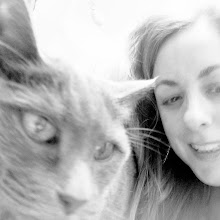 Beans,
Beans,
End It
All, An-
ticon
Tight as a rat's rectum.
--"Glass Coffins"
The fourth solo joint from Anti-Pop Consortium member Beans
doesn't get off to an auspicious start, but stick with it, and the re-
cord builds in momentum. He may not be most expressive em-
cee, but he compensates with clever wordplay and multi-textur-
al beats (I particularly like the way he "rocks to the PM Dawn").
His roster of producers include Nobody, Four Tet, Tobacco, and
Interpol's Sam Fog. At times, the instrumental backdrops come
close to experimental/musique concrète territory, but he always
brings things back to reality before the number is through.
Click here to watch the "Blue Movie" video.
In his bio, Beans cites "Suicide as his main influence (with nods
to Sun Ra, Mantronix, Sonic Youth, Public Enemy, & Autechre)."
For me, the highlight is the vocal interplay between the rapper
and Tunde Adebimpe (TV on the Radio) on "Mellow You Out."
Laura Stevenson & the Cans, Sit
Resist, Don Giavanni Records [4/26/11]
Sit Resist offers jaunty, vibrato-laden Americana with woozy
horns in the vein of Regina Spektor. Throughout her second re-
cord, Laura Stevenson's voice swoops up and down, some-
times into a little-girl croak. According to the press notes, her
grandfather, Harry Simeone, a vocalist with the Benny Good-
man Orchestra, composed "Little Drummer Boy." Cool cred-
entials, but I have no tolerance for this kind of thing. She is-
n't without talent, but the disc is too precious for my taste.
Gil Scott-Heron & Jamie xx, We're
New Here, XL Recordings [2/22/11]
As much as I loved I'm New Here, a remix release feels extra-
neous, even if Jamie xx participated in both projects. After all,
the way Gil Scott-Heron stripped the material down to its es-
sence--the better to hear his words-- was its biggest strength.
Consequently, the most interesting tracks didn't appear on I'm
New Here or have re-emerged in new form, like "My Cloud,"
"The Crutch," and "Ur Soul & Mine." On the contrary, Jamie
doesn't do anything with "New York Is Killing Me" that improv-
es or re-contextualizes it in any significant way; just adds a few
sound effects here and there. Stick with the original recording.
Endnote: For more information about Beans, please
click here; for Gil Scott-Heron and Jamie xx, here;
and for Laura Stevenson, here. Beans plays Chop
Suey with Tobacco on 4/22. Image from One O'Clock.








